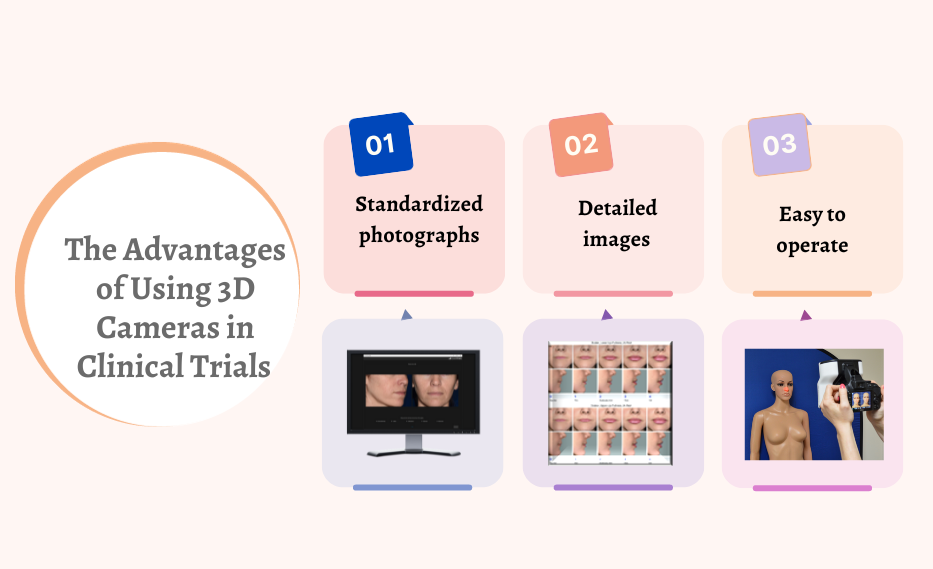Enhancing the Quality of Clinical Trial Data With 3D Photography

As the medical aesthetic market experiences robust growth, its accompanying technologies continue to evolve. Aesthetic trials use validated scales to evaluate the severity and improvement of a given condition in order to support efficacy endpoints. These evaluations are often performed as live local assessments at the site. However, as objective as these scales aim to be, these methods of assessment often lack standardization and introduce biases that can affect the reliability of the final results.
Fortunately, 3D technology can provide an efficient solution to this concern and offer a variety of assets to enhance the quality of clinical trial photography. This technology allows for photographs to be taken and analyzed in greater detail without manual adjustments or optimization, ultimately reducing costs associated with trials and centralizing data collection.
The Advantages of Using 3D Cameras in Clinical Trials

1. Standardized photographs
3D cameras are an ideal choice for capturing highly standardized photographs in clinical trials. The images can be realigned to match with baseline using software-aided techniques, which generates more comparable images and improves the level of standardization for central evaluations.
2. Detailed images
The superior resolution of 3D cameras can be utilized for a wide range of evaluations such as skin texture and wrinkles. 3D photographs can also be analyzed to extract quantitative measurements which are performed centrally using validated computer-aided techniques. This type of analysis often offers a more objective and accurate option of evaluating treatment efficacy, particularly evident in applications such as dermal fillers.
3. Easy to operate
3D camera settings are pre-calibrated, settings and distance are locked for optimal image quality resulting in no variation in quality between visits or sites. This technology reduces the cost of the trial by minimizing the number of images taken at each visit and the need for photography editing.
The Regulatory Challenges of Using 3D Cameras and Data in Clinical Trials
The utilization of 3D cameras and data in clinical trials can present some unique regulatory challenges, as the technology has yet to be widely adopted. All relevant regulations are to be closely followed and enforced to protect patient safety and maintain confidentiality. Any images or data collected must be securely stored and handled in accordance with industry standards.
In Europe and China, 3D quantitative measurements have been approved in clinical trials; however, such is not the case for the United States who still only acknowledges qualitative measurements according to a scale.
As 3D technology continues to become increasingly prevalent within clinical trial settings, it will undeniably hold an influence on how data is gathered and analyzed to significantly contribute to the successful execution of your clinical aesthetic trial. This technology elevates data and image collection by rendering it more accurate and by standardizing the photography process across multiple trial locations.
Innovaderm Research and Quantificare are at the forefront of incorporating 3D camera technology and data into clinical trials. Our team of experts in regulatory affairs, data management and quality assurance are dedicated to ensuring the safety and privacy of all patients while collecting accurate, standardized, and consistent data across multiple trial locations. Contact us to learn more about how 3D camera technology can benefit your clinical trials.
About the Author:
As Chief Business Officer of Clinical Services of Quantificare, Nicolas Dapis has dedicated his career to using 3D cameras and data in clinical trials. He is highly experienced and knowledgeable in regulatory compliance, secure data handling, and industry standards.
Stay updated on the latest in the dermatology industry by subscribing to our newsletter. Do not miss out on valuable insights and research updates. Join our scientific community today.
Newsletter
Newsletter subscription resources

